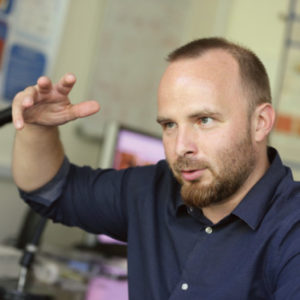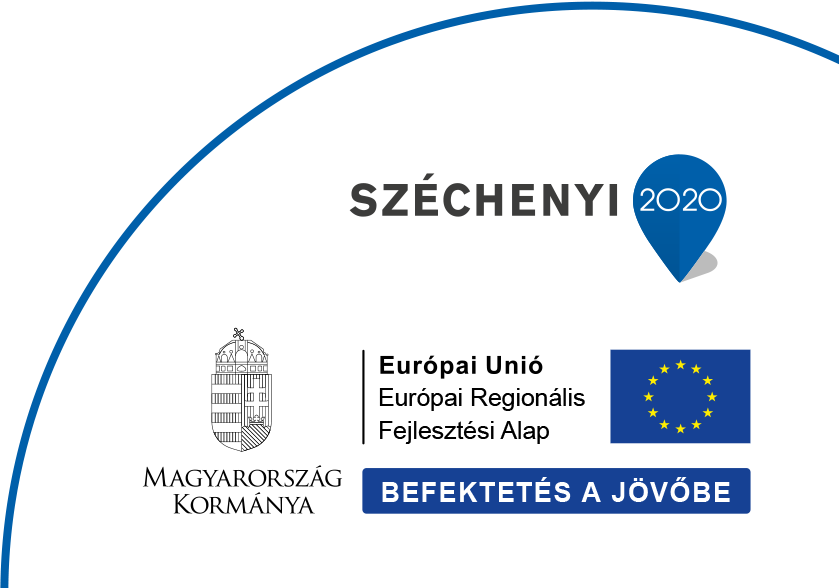
Head of Department
Levente Tapasztó
Tel: +(36-1)-392 2222 / 2680,1378
E-mail: tapaszto.levente@ek-cer.hu
The main focus of the Nanostructures Department is the research of two-dimensional (2D) materials. The research activity covers the synthesis of 2D materials, the atomic-scale characterization and nanometre precision modification of their structure for engineering the electronic, optical and magnetic properties. Beyond the investigation of graphene on-going for more than a decade, the focus of attention is shifting towards the research of 2D transition metal chalcogenides, topological insulators, 2D materials/metal nanoparticle hybrids, as well as assembling artificial crystals (2D hetero-structures) atomic layer by layer. The Department is also active in the investigations of biological and bioinspired photonic nanostructures.
Main research areas:
Synthesis of 2D materials: They have developed a novel exfoliation technique for isolating single layers from various layered bulk crystals that enables the fabrication of single-layers with up to cm2 lateral dimensions, at least two orders of magnitude larger than previously achieved. The gold assisted exfoliation technique developed in the Laboratory has been adopted and developed further at such top tier universities as Stanford or Berkeley. Besides mechanical exfoliation they also synthesize large area 2D crystals by Chemical Vapour Deposition (CVD) technique, of particular importance for practical applications.
Imaging the atomic and electronic structure of novel materials: The Laboratory’s main expertise is in the field of characterizing the structure of materials at the atomic resolution level using Scanning Tunneling Microscopy (STM). They were the first to image with atomic resolution the defect structure of various 2D transition metal chalcogenide crystals, as well as the spontaneous incorporation of O atoms from air into the atomic structure of MoS2 single layers, by substituting individual S atoms of the crystal lattice. Concerning the electronic structure investigations, by tunneling spectroscopy measurements, they provided experimental evidence on the opening of a topological bandgap in the electronic structure of Pt2HgSe3 crystals, and revealed the corresponding topologically protected electronic edge states that are able to conduct electricity without backscattering (resistance).
Nanometre precision engineering of 2D materials: The Nanostructures Laboratory has developed several new nanoengineering techniques, among them the most precise nanofabrication technique for defining 2D nanostructures. The STM lithographic technique developed here is able to define graphene nanostructures with 0.5 nm precision, enabling the control of their electronic and magnetic properties. They have also developed an Atomic Force Microscopy (AFM) based nanofabrication technique that employs cleaving 2D crystals along their high-symmetry crystallographic directions, enabling a more precise (< 10 nm) nanofabrication than previously achieved with similar techniques. The major advantage of the AFM cleavage lithography is the fabrication of 2D nanostructures that can be directly integrated into nanoelectronic circuits.
Nanoelectronic devices and catalytic applications based on 2D materials: Employing AFM lithography, they have realized to date the most robust graphene-based quantum point contact device, displaying quantized conductance plateaus in the absence of external magnetic fields, even on standard SiO2 substrates, and at temperatures as high as 40K. For other potential applications, they investigate the catalytic activity of various 2D materials. Their strategy is to modify the structure of such 2D crystals at nanometre, or even single-atomic scale to catalytically activate their otherwise inert basal plane. Beside the incorporation of single heteroatoms, they also investigate the stable decoration of 2D crystals with metal nanoclusters and nanoparticles that hold the promise ofr developing cheap and efficient catalysts for hydrogen evolution.
Bioinspired photonic nanoarchitectures: They investigate the complex structure and optical properties of various nanoarchitectures of biological origin, conferring the colour to the wings of some butterfly species. They investigate the application potential of such biological or bioinspired photonic nanostructures in optical sensing.
Website of the department: www.nanotechnology.hu
Our publications:
https://m2.mtmt.hu/gui2/?type=institutes&mode=browse&sel=institutes21869
The colleagues of the department:
Levente Tapasztó – Head of department
László Péter Biró
Gergely Dobrik
Zsolt Endre Horváth
Krisztian Kertesz
Antal Koós
Péter Kun
Géza Márk
Péter Nemes Incze
Zoltán Osváth
András Pálinkás
Gábor Piszter
Péter Süle
Márton Szendrő
Zoltán Tajkov
Peter Vancsó
